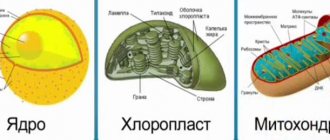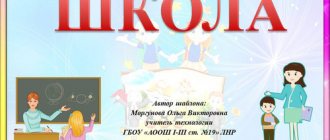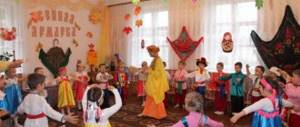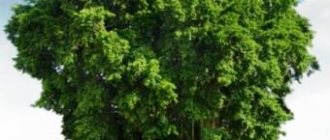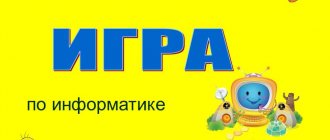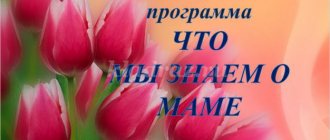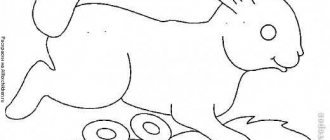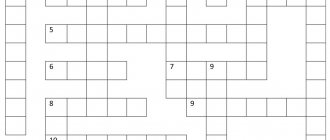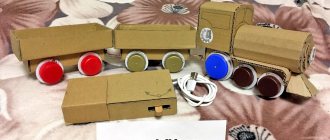Presentation “Options and methods of artistic and creative activities for children”
Olga Stupitskaya
Presentation “Options and methods of artistic and creative activities for children”
Presentation “Options and methods of artistic and creative activities for children”
Stupitskaya O. V.
Slide No. 2
The art of origami.
The art of origami is like magic. From ordinary paper, under the hands of a person, beautiful figures of animals, birds, and flowers are born. They arise without the participation of glue and scissors, thanks to the skillful actions of a person to beautifully fold the paper. Translated from Japanese, “origami” means “paper folding.”
Initially, the art of origami was used to create figurines used in religious rituals. Paper was “born” back in Ancient China, from where the secret of its production later emerged in Japan. Only people from the upper class could fold origami, and mastery of this art was considered a sign of good taste.
There are several types and techniques of origami. Eg:
• Simple origami. This is a style in which only mountain or valley folds are used, there are no complex elements and this type is used for beginners.
Slide No. 3
• Modular origami. This type involves many individual figures, folded according to the principles of simple origami and connected to each other by simple insertion; it is permissible to use glue to fasten the parts of the figure.
Slide No. 4
• Wet folding. This is a folding technique in which paper moistened with special solutions is used to create models. Using this method, you can achieve smooth and expressive lines, and animal figures are more realistic.
Slide No. 5
• Pattern folding. This is a method in which origami is folded according to pre-applied drawings, along the bending lines, following the author’s instructions.
To make origami beautiful, it is important to use the right material. To fold simple figures, it is easier to use plain paper, for example, for a printer with a low density. Thicker paper is more suitable for the wet folding technique. Today you can find various types of paper on sale, including special ones for origami. It's called "kami", which means "paper" in Japanese. Most often, such paper has one colored side and a square shape. Recently, the use of foil paper for origami has become popular. An important quality of this type is the retention of good shape, which simplifies the development of any model to the smallest detail.
Classes on working with origami develop the child’s imagination, cultivate accuracy, and improve hand motor skills. Origami helps improve a child's eye, activates thinking and imagination. Origami helps a child to distract from negative thoughts and emotions, immersing himself in creativity, from a learning point of view, to more accurately learn geometric shapes and concepts. Every time a child does origami, he gets a new figurine. Realizing that this is his own work, the child experiences a feeling of joy and satisfaction. A child can make a craft for himself, for his mother for any occasion, or just to please her, for his grandmother, for friends, brothers and sisters. Starting with the simplest compositions, the child’s skills gradually improve and the emotions from their works will be more intense and vivid.
Slide No. 6-7
Plasticineography. Modeling.
Modeling is one of the most common types of children's creativity. Every child, starting from a young age, gets acquainted with plasticine or similar materials. This is an exciting activity that gives the child the opportunity to feel like a creator, a master. Modeling is an entertaining, educational and useful activity for a child. In modeling classes, children develop hand motor skills, which is associated with the development of the child’s speech, his creative abilities, taste, fantasy, imagination, activation of the brain and intellect.
Modeling implies that a child has such qualities as patience, accuracy, perseverance, planning and finishing the job he has started. These indicators are necessary for a child not only to engage in creative activities, but also for life in general, for mastering educational subjects at school.
Comparing modeling, for example, with fine art, we can also note that a child draws and sculpts what his imagination, his inner world, or what he sees around him gives him. These are objects and phenomena that surround the child. Like fine art, modeling develops children’s imagination and comprehensively develops their personality.
In modeling classes, the function of the teacher is important. The teacher, the adult, is not just an observer for the child during the modeling process. He is directly involved in this process, gives advice, explains and demonstrates, helps and corrects, praises for successes and supports in failures. It is the teacher who instills in children an interest in this activity, teaches them to work with the material, shows its capabilities, and helps the child master the skills and methods of modeling.
Modeling involves the production of three-dimensional figures from various soft materials (plasticine, natural and polymer clay, salt dough, etc.).
Plasticineography is an artistic technique, which is one of the types of decorative and applied arts. This technique involves making convex, semi-volume paintings, images based on plasticine. The tool used in plasticineography is the hand. This technique is available to children of all ages, preschool and primary school. From the point of view of benefits for the child, in addition to the development of imagination and fantasy, plasticineography promotes the development of hand motor skills, as noted earlier, which stimulates the child’s brain activity. The skill of the hands and their strength, consistency in work increases, and it becomes easier for the child to master writing. Children get acquainted with the world of objects, phenomena, and expand the possibilities of visual activity.
From the point of view of mental processes, plasticineography develops attention, imagination, memory, thinking, perception, spatial orientation and other important and significant functions that a child needs in mastering school education, develops creativity and creative abilities.
Slide No. 8
Figures made from salt dough.
Modeling from salt dough, like plasticineography, or modeling from various soft materials, contributes to the development of a child’s visual perception and imaginative thinking. This type of creative activity instills in the child the ability to master manual techniques and various skills necessary for the child to successfully master schooling, including. Modeling, along with other types of creative development, instills in a child a sense of beauty and forms aesthetic taste. It can be reasonably assumed that modeling from non-traditional materials, such as salt dough, has a beneficial effect on the development of the child as a creative personality
The feelings that arise in a child in the process of creativity are aroused by the desire to convey the beauty he has seen, awakening and developing creative activity.
Modeling provides a unique opportunity to model the world, a child’s idea of space, the volume of objects. As noted earlier, modeling is available to any age of the child. This is the most tangible form of artistic creation. Unlike visual activity, a child can not only see, but also feel what he has created, he can pick up his creation, examine it from all sides, change its shape, size, appearance, etc.
The dough is a pleasant to the touch, harmless, non-allergenic material. It can be prepared at any time chosen by the child. The dough does not leave greasy marks on hands and clothes, is easy to wash, does not stick to your hands, taking into account the correct technology for its production and is very plastic.
Working with salt dough, using plasticine as an example, activates the work of the fingers and the brain and, undoubtedly, activates the development of creativity, especially in children. Also, this type of creativity is characterized by such qualitative characteristics as:
1. Increasing sensory sensitivity, promoting a subtle perception of shape, texture, color, weight, plasticity;
2. Development of imagination, spatial thinking, fine motor skills;
3. Synchronization of the work of both hands;
4. Formation of the ability to plan work to implement a plan, anticipate results and their achievements;
To make salt dough, you need the following material:
Flour is a natural product. To make salted dough, you can use inexpensive types of flour that have not been subjected to special processing and without the addition of emulsifiers and raising agents. For modeling, the presence of vitamins and microelements in the material (flour) is not important. Wheat flour is better suited for this, because rye flour forms more pores, it is more difficult to dry, and it is harder when molded. If there is a need, or the amount of flour is limited, you can mix different varieties.
Salt. A large amount of salt is not required, as it is added to the dough as protection against harmful insects or mice. If there is too much salt, the dough can become brittle and brittle, and this will lead to the formation of cracks in the product. Salt can be any kind. If it is coarsely ground, then it is better to grind it. For example, in a coffee grinder.
Slide No. 9-10
Application.
Appliqué, translated from Latin, means application, a method of creating ornaments, patterns, various images by gluing pieces of material (paper, fabric, etc.) of various sizes and colors onto paper (or fabric), taking into account the creation of a relief image.
Application is widely used in the creative activities of children at almost any age. This type is excellent for the harmonious and all-round development of the child. The application has a positive effect on such child development processes as:
• Formation of artistic and graphic skills;
• Formation of aesthetic perception of the surrounding world;
• Development of artistic taste;
• Development of imagination, creativity, spatial perception and fantasy;
• Nurturing the culture of the viewer;
• Formation of knowledge about world artistic culture;
• Development of fine motor skills.
Already from the age of 2-3 years, you can begin to introduce your child to the application. This is the age when a child strives to do everything he is attracted to, they are active and happily participate in various activities and creative activities. During this period, the child may well be aware (taking into account the help and support of an adult, educator) of the following qualities:
Understand the knowledge of the materials needed for appliqué work: glue, scissors, brush, paper, etc.;
Show interest in activities with paper;
Show an active response to the offer of a teacher or adult to take part in creating an application;
Show the desire to independently carry out actions to create crafts;
Experience joy and positive emotions from the created image, recognize the work.
The application can be presented in various ways and options, taking into account different directions and goals:
By content: subject (including individual images, plot (including a set of actions, plots), decorative (including ornaments, patterns);
By the number of colors used: silhouette (one color, colored (many colors);
By shape: geometric (full or partial use of geometric shapes, without restrictions on shapes;
By manufacturing method: cut (cutting out parts, elements, torn (a method of tearing paper);
By the number of elements: whole (pasting complete parts of an image of an object onto the base, partial (pasting objects made from individual parts of different colors or the same color), mosaic (pasting an image from small pieces of the same color or different colors);
According to the method of fastening the elements: single-layer (without overlapping each other), multi-layer (overlaying parts on each other and on the background, sometimes in several layers).
In any case, appliqué practice implies familiarity with objects and requires the child to acquire knowledge about their properties, quality, shape, size, and position in space. Children need to learn to compare objects, name their shapes, see similarities and differences. Working with paper during applique develops sensory perception in children: unfolding, cutting, tearing, folding, bending, gluing, etc.
Presentation Templates
Do you want to create a good presentation and are looking for a unique template? We want to make you happy, you found what you were looking for. We have one of the largest collections in RuNet. Everything can be downloaded for free. Every day our database is updated with dozens of new materials. Strict moderation leaves only the highest quality and most interesting ones.Topics: educational, business, entertainment, holiday, subject, modern, for primary school and kindergarten, etc.
Backgrounds: dark, colored, light, rainbow, widescreen, square, with frame, without frame, white, stylish, etc.
Subject Templates
• Children's, The world around us • Russian language, Literature • Fine arts, Music, Creativity • Mathematics, Algebra, Geometry • Geography, Countries, Patriotism • Biology, Chemistry, Ecology • Foreign languages • History, Social studies • Life safety, traffic rules, Peace, Friendship • Space, Astronomy, April 12 • Technology, Passion, Hobby • Physical education, Sports, Chess
• Old template collection
Holiday Templates• School, education, September 1 • New Year, Christmas • Victory Day, May 9 • Maslenitsa, Easter, Orthodox • March 8, Mother's Day • Defender of the Fatherland Day, February 23 • Love, Valentine's Day, February 14 Thematic templates• Fairy tales, Cartoons • Games, Quizzes, Tests • Seasons, Weather • Flowers, Rainbow • Nature, Plants, Animals • Universal templates • Business, Strict, Business • Inclusive learning • Various templates |
All works are submitted by users of our portal. Select a theme or background, follow the link and download the archive you like. There are no download restrictions. All works are accompanied by screenshots, and the file contains at least 3 options. If you liked the material, please leave a comment to the author, he will be pleased.
| In the section 2522 presentation templates | Pages: 1 2 3 … 126 127 » |
| Templates for presentation "Autumn 3" Seasons, Weather | presentation |
| The autumn calendar contains many holidays that are celebrated in educational institutions: Knowledge Day, Teacher’s Day, Autumn Ball, Harvest Festival, Miss and Mister Autumn, it’s impossible to list them all. To help teachers, these templates have been created to help create a presentation for the fall event. |
| No. 75602 | 05.10.2020 | Erica | 1.5Mb | 501 23 5 |
| Templates for presentation “Universal 12” Universal templates | presentation |
| Universal templates were created to help teachers post materials for lessons during distance learning. They are spacious and convenient for block feeding of material. |
| No. 75601 | 05.10.2020 | Erica | 2.5Mb | 303 22 1 |
| Templates for presentation "Autumn 2" Seasons, Weather | presentation |
| In the current calendar, there are many holidays in the fall that are celebrated in educational institutions: Day of Knowledge, Teacher's Day, Autumn Ball, Harvest Festival, Miss and Mister Autumn, it’s impossible to list them all. |
| No. 75600 | 05.10.2020 | Erica | 0.8Mb | 287 18 3 |
| Templates for creating presentations “The rowan tree was lit with a red brush” Various templates | presentation |
| Templates for creating presentations “The rowan tree was lit with a red brush” were made in Microsoft Office Power Point 2010. The slides have sufficient area to accommodate text and illustrative material. |
| No. 75544 | 09/26/2020 | chamomile5975 | 2.3Mb | 646 66 4 |
| Templates for creating presentations “The Charm of Autumn” Seasons, Weather | presentation |
| Autumn - bright, sunny, rich in colors - has come into its own! She gives joy and charm from the latest flowers and colorful leaves. Templates for creating presentations “The Charm of Autumn” were made in Microsoft Office Power Point 2010. |
| No. 75436 | 09/12/2020 | chamomile5975 | 4.1Mb | 1487 263 7 |
| Template for the interactive educational game “Cinderella” Games, Quizzes, Tests | game, quiz | presentation |
| This interactive didactic game template can be used to create presentations for lessons and extracurricular activities in any subject. This template can be used in two versions. |
| No. 75424 | 09.09.2020 | Linda | 1.5Mb | 1224 90 22 |
| Game template “Autumn leaf fall” (for 25 tasks) Games, Quizzes, Tests | repetition, systematization | presentation |
| This template for the game was created in Microsoft Office Power Point 2010. The slides have sufficient area to accommodate text and illustrative material. It can be used to create a game for lessons (classes) or extracurricular activities. |
| No. 75383 | 02.09.2020 | MAG | 2.7Mb | 1638 148 11 |
| Presentation templates “Universal 11” Universal templates | presentation |
| Universal templates were created to help teachers post materials for lessons during distance learning. They are spacious and convenient for block feeding of material. |
| No. 75374 | 08/30/2020 | Erica | 0.6Mb | 1462 142 5 |
| Templates for presentation "Autumn 1" Seasons, Weather | presentation |
| In the current calendar, there are many holidays in the fall that are celebrated in educational institutions: Day of Knowledge, Teacher's Day, Autumn Ball, Harvest Festival, Miss and Mister Autumn, it’s impossible to list them all. To help teachers, these templates have been created to help create a presentation for the fall event. |
| No. 75373 | 08/30/2020 | Erica | 0.3Mb | 1233 113 6 |
| Presentation templates “Universal 10” Universal templates | presentation |
| Universal templates were created to help teachers place materials for lessons during distance learning. They are spacious and convenient for block presentation of material. |
| No. 75345 | 08/26/2020 | Erica | 0.7Mb | 817 69 4 |
| Templates for presentations “Knowledge Day 3” School, education, September 1 | presentation |
| Thematic templates “Knowledge Day” were created to help the teacher to post materials for the holiday on September 1, to create presentations for class hours, as well as for school-wide events. |
| No. 75343 | 08/26/2020 | Erica | 1.2Mb | 1834 368 4 |
| Templates for presentations “Lyrical” Russian language, Literature | presentation |
| Wide-format templates are created for posting materials for literature lessons or extracurricular activities. The archive contains 3 variants of templates with a variety of backgrounds, original designs and various layout options. |
| No. 75307 | 08/21/2020 | Beleninka | 5.2Mb | 1149 86 13 |
| Presentation templates “Universal 9” Universal templates | presentation |
| Universal templates were created to help teachers post materials for lessons during distance learning. They are spacious and convenient for block feeding of material. |
| No. 75297 | 08/20/2020 | Erica | 2.0Mb | 937 106 5 |
| Templates for presentations “Knowledge Day 2” School, education, September 1 | presentation |
| Thematic templates “Knowledge Day” were created to help the teacher to post materials for the holiday on September 1, to create presentations for class hours, as well as for school-wide events. They are spacious and convenient when working with different materials. |
| No. 75296 | 08/20/2020 | Erica | 1.5Mb | 2313 388 4 |
| Presentation templates “Universal 8” Universal templates | presentation |
| Universal templates were created to help teachers place materials for lessons during distance learning. They are spacious and convenient for block presentation of material. |
| No. 75282 | 08/19/2020 | Erica | 0.6Mb | 680 112 4 |
| Templates for presentations “Knowledge Day 1” School, education, September 1 | presentation |
| Thematic templates “Knowledge Day” were created to help the teacher to post materials for the holiday on September 1, to create presentations for class hours, as well as for school-wide events. |
| No. 75281 | 08/19/2020 | Erica | 1.6Mb | 1859 412 4 |
| Postcard templates “Lesson schedule 2020-2021 school year” School, education, September 1 | Classroom hour |
| The archive contains five postcard templates “Lesson Schedule for the 2020-2021 academic year.” There are spaces in the schedule to fill out your own schedule (individual consultations) for each day. |
| No. 75251 | 08/18/2020 | chamomile5975 | 0.4Mb | 1589 172 3 |
| Templates for presentations “Universal 7” Universal templates | presentation |
| Universal templates were created to help teachers place materials for lessons during distance learning. They are spacious and convenient for block presentation of material. |
| No. 75244 | 08/14/2020 | Erica | 2.1Mb | 1106 159 21 |
| Templates for creating presentations “Autumn Bouquet” Flowers, Colors, Rainbow | presentation |
| Templates for creating presentations “Autumn Bouquet” are made in Microsoft Office Power Point 2010. The slides have sufficient area to accommodate text and illustrative material. |
| No. 75240 | 08/14/2020 | chamomile5975 | 3.8Mb | 1148 192 9 |
| Templates for presentations “September 1” School, education, September 1 | presentation |
| Thematic templates “September 1” were created to help the teacher to post materials for the Day of Knowledge, to create presentations for class, as well as for school-wide events. |
| No. 75237 | 08/11/2020 | Erica | 0.8Mb | 2285 368 12 |
1-20
21-40 41-60 … 2501-2520 2521-2522
